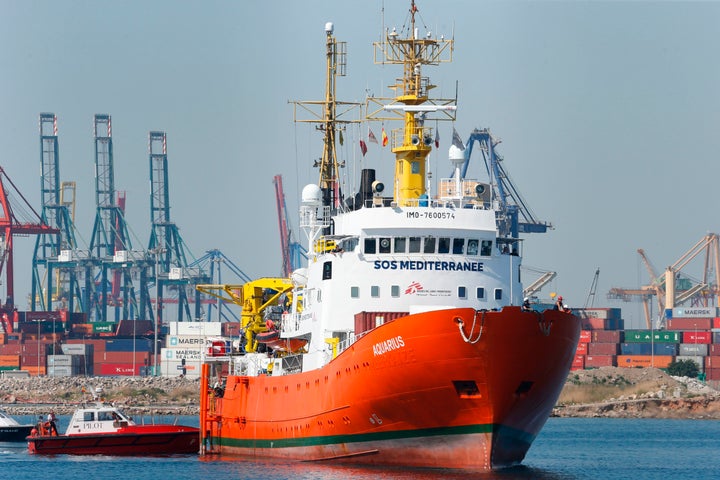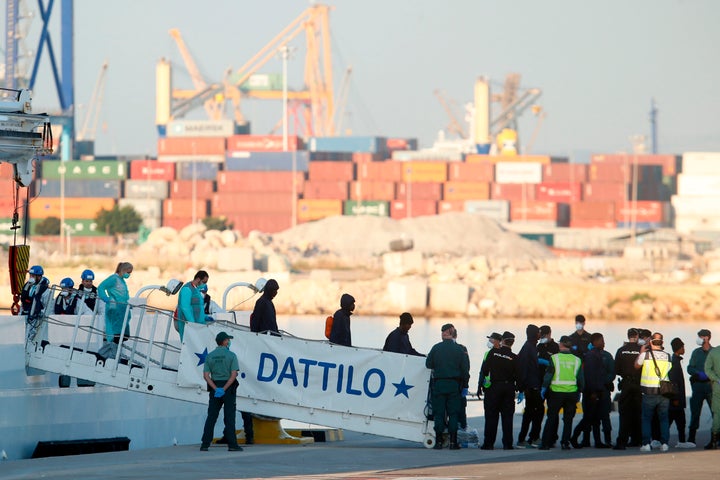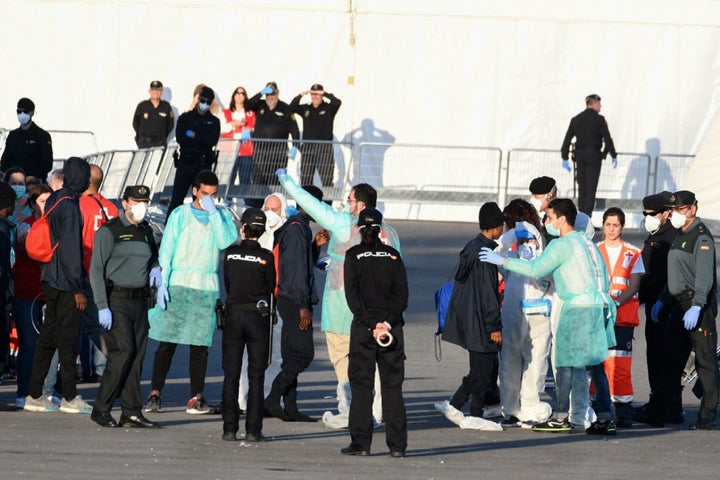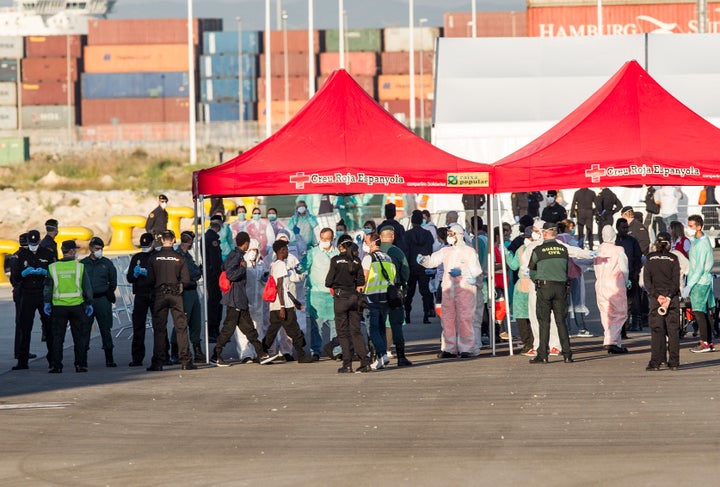Ships in the Aquarius aid convoy which rescued 630 migrants off the coast of Libya have arrived at the Spanish port of Valencia, accompanied by Italian government ships.
Their arrival ended a week-long ordeal for hundreds of people who were rescued from the Mediterranean only to become the latest pawns in Europe’s battle over immigration.
The Italian coastguard vessel Dattilo was the first of the three boats to arrive just before 7am on Sunday
The 270 migrants on board soon began to disembark after medical staff had made a preliminary inspection.
The rescue ship Aquarius came in at 11am with another 106 migrants. Another Italian navy ship, the Orione, came in shortly after 1pm.
Emergency workers, including health officials and psychologists, met the migrants upon arrival.
The volunteers of the Red Cross said that many of the migrants arrived with post-traumatic stress disorder, HuffPost Spain reports.
The Aquarius, a boat operated by the aid groups SOS Mediterranee Sea and Doctors Without Borders, was stuck off the coast of Sicily last Saturday when Italy refused it permission to dock and demanded Malta do so.
Malta refused and Spain stepped in and offered to grant them entry some 930 miles away.
The migrants were met by emergency workers, including health officials and psychologists, at the city’s marina.
David Noguera, the head of Doctors Without Borders in Spain, said he was glad that Spain allowed the migrants in but said he was worried that more European nations would close their ports to those rescued at sea in the future.
“I have mixed feelings,” he told The Associated Press. “I am happy that the journey (for the Aquarius migrants) is over – a journey that was too long – and I am worried for the situation in the Mediterranean and the closing of European ports.”
Valencia emergency official Jorge Suarez said some of the migrants were in a state of shock.
“They are very shaken,” Suarez said. “Put yourself in their position, you get off a ship and the first people who greet you are wearing masks.”
Spanish authorities have said they will examine the migrants case by case to see if they qualify for asylum according to the country’s regulations.
Spain’s minister of public works, Miguel Angel Abalos, said on Saturday that the migrants from the Aquarius would be granted a “special authorisation” to remain in the country for one month before “they will be dealt with according to our laws without exception”.

Abalos said the Spanish government “will act with sensitivity and at the same time within the law, and with a message to Europe that it doesn’t have an immigration policy up to the challenge at hand”.
Those on the boat who were forced to spend days crossing the western Mediterranean includes 123 unaccompanied minors, 11 children and as many as seven pregnant women, according to Valencia’s regional authorities.
Spain has accepted the French government’s offer to take in those migrants who want to go to France “once they have fulfilled the protocols established for their arrival”.

The refusal by Italy and Malta to allow the Aquarius to enter their ports has created a row between EU members over how to handle immigration.
Under the EU’s asylum laws — currently the subject of a major political dispute and under revision — migrants must apply for asylum in the country where they first enter Europe.
In practice, the policy has placed a heavy burden on Italy and Greece, where hundreds of thousands of asylum-seekers have arrived in recent years.
Spain’s new Socialist government has taken up the cause of the migrants’ plight to demonstrate its commitment to protecting human rights and respecting international law.


The arrival of the Aquarius convoy comes during a spike of seaborne migrants crossing from African shores to southern Spain.
Spain’s maritime rescue service pulled 986 people from 69 small boats its rescue craft reached in waters in or near the Strait of Gibraltar between Friday and Saturday. It also recovered four bodies.
At least 792 migrants have died crossing the Mediterranean so far this year, according to the United Nations.
Through the first five months of 2018, a total of 35,455 migrants reached European shores, with 11,792 of them arriving in Spain.
